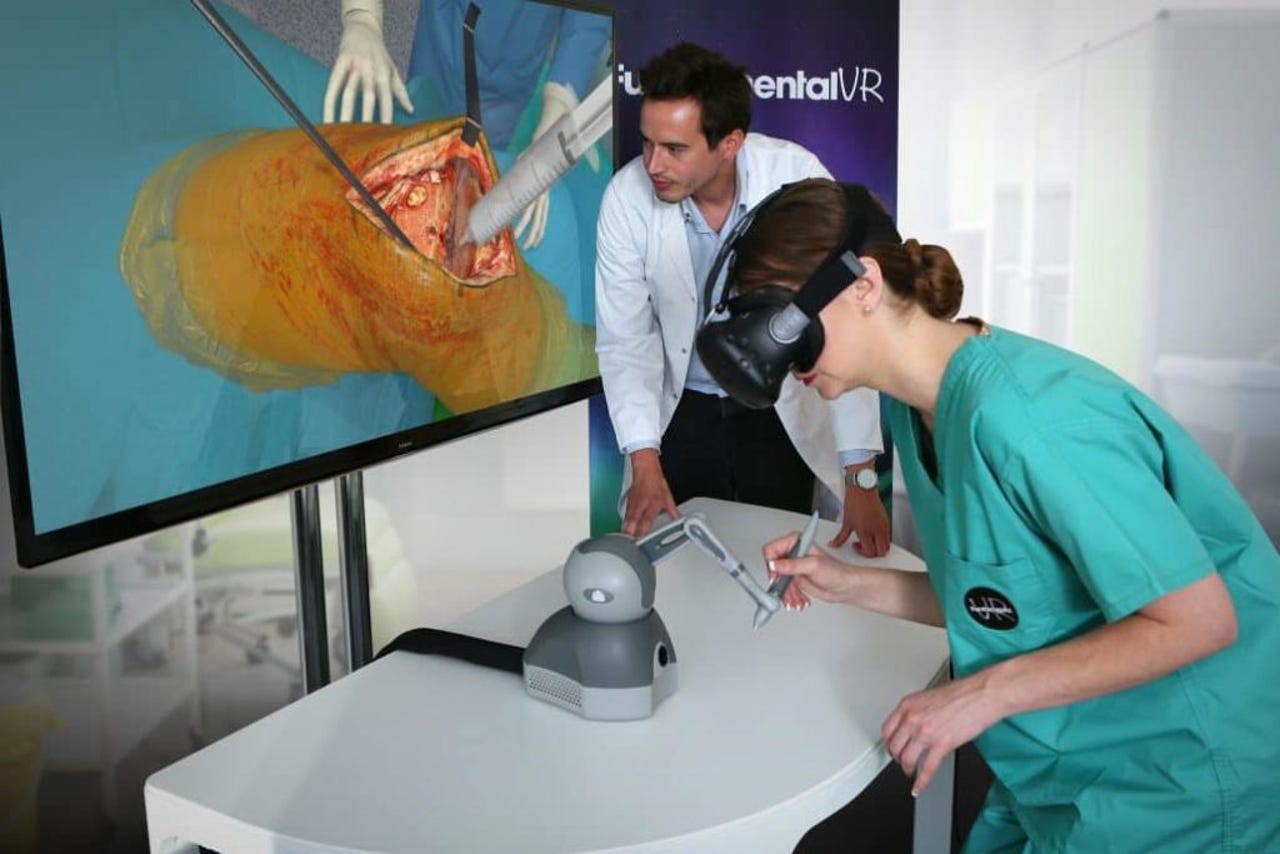Cheaper than a cadaver: Haptic flight simulator puts surgeons in the virtual cutting room


London-based FundamentalVR, which makes simulation technology for medical training, is rolling out a new surgical flight simulator. Employing advanced haptics to mimic the real-life sensations of multiple surgical tools, the company is hoping the training experience feels less like a game and more like a real-life surgical scenario.
This is the first time I've come across a company boasting that its product is cheaper than a dead body. According to a FundamentalVR spokesperson, the combination of low cost off-the-shelf hardware and plug-and-play simplicity brings the price point for the simulation platform under that of a training cadaver.
Presumably you can get quite a bit more use out of the VR solution, as well.
The rise of surgical simulators, which have become an unlikely bellwether for professional VR training, stems from the peculiar difficulties of teaching surgical skills without unduly endangering patients. While surgical technology has changed by leaps and bounds in the last century, the way surgeons are trained has remained largely the same.
Surgical training typically consists of some combination of classroom work, cadaver-based teaching, surgical observation, and hands-on cadaver use. One development that's had a surprising impact on the way surgeons are trained is YouTube. Procedures captured on video give trainees a chance to study and learn from experts in a repeatable, on-demand fashion.
Virtual reality is an obvious extension of on-demand video, adding interactivity to the passive process. But most simulators that offer a sense of touch, which is crucial to the training process, are pricey, costing in excess of $75,000. The FundamentalVR solution relies on off-the-shelf headsets and widely-available haptic arm devices.
The reliance on consumer technology as opposed to enterprise hardware, even in such a specialized application, could signal a wind change.
Increasingly, technicians in a variety of fields, including oil & gas and field service technicians, are training on simulators.
Currently, many enterprise VR applications are running on specialized hardware, such as DAQRI headsets. But as consumer technology improves, VR hardware could follow the trend we've seen in personal computing, where the lines between enterprise and consumer tech are blurry.